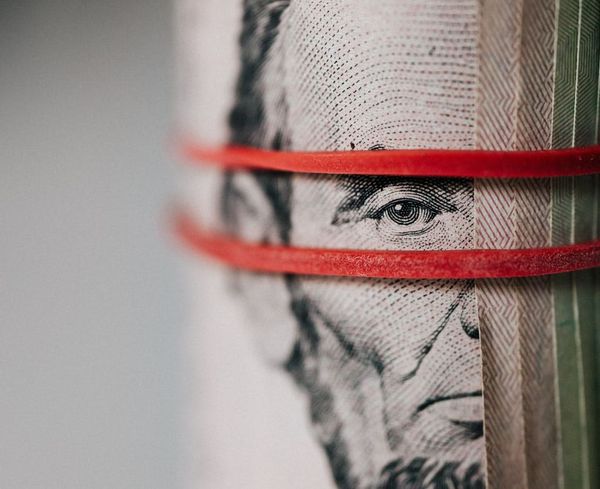
Will Declining Consumer Spending Cause Deflation?
Will Declining Consumer Spending Cause Deflation?
Deflation, also known as negative inflation by some experts in public economics, occurs when prices crash within an economy — or the inflation rate falls below zero percent (0%). This fall in prices can be driven by a supply-demand shift. That’s when the supply of goods and services outweighs the demand for them. Deflation can also be characterized by declining customer spending.
Other Causes of Deflation
This isn’t a cause on its own, but a consequence of other factors.
Purchasing Power
Deflation can also be driven by an increase in the purchasing power of the currency. Purchasing power or buying power increases when the supply of money within the economy reduces.
When the money in circulation is not enough for the spending population, people are inclined to spend less money; they hold on to their money instead.
This generally leads to decreased spending, and producers and service providers will be forced to reduce their prices to make people want to buy what they are offering.
Productivity
Reduction in the supply of money and supply and demand dynamics are, however, not the only reason for the reduction in prices, as an increase in process efficiency, productivity, and technological advancements can cause the prices of products and services to drop.
Technological breakthroughs and innovations have so far been the most positive cause of deflation. It means that costs of production and delivering services are reduced without actually harming the economy.
Competition
Competition among companies providing the same kind of products or services may cause those companies to cut costs, thereby driving prices down and resulting in deflation. Such competitions are prevalent in the beverage industries.
You can see this between Nestle and Cadbury, and between Coca Cola and Pepsi.
Public Policies
Austerity measures imposed by the government can also result in deflation. Austerity measures are policies implemented to ease public sector debt, that is, to avoid a sovereign debt crisis or to make up for a budget deficit.
A sovereign debt crisis can occur when a nation is unable to pay its bills or service loans, usually due to poor economic policies and politically driven decisions.
These policies usually comprise a reduction in government spending and an increase in tax. Some common measures practiced include a reduction in employee salaries or benefits, privatization of government-owned establishments, cutting poverty alleviation programs, increasing value-added tax, and increasing taxes.
What Are the Consequences of Deflation?
Generally, deflation is not a positive economic sign because it is usually a signal of an impending recession. Deflation is a condition that, if not checked, could result in devastating consequences, consequences that can be difficult to find remedies for. Some of these consequences include:
A high rate of unemployment: Deflation can lead to a high level of unemployment because companies tend to cut costs when their revenues are affected, that is when they make less money.
Depending on the product or service the company offers, cutting costs may mean a reduction in salaries, laying off staff, shutting down of plants, warehouses, service centers, and stores. This revenue loss and subsequent cost reduction may cascade across the supply chain, as there is less demand from primary suppliers down to the distribution and delivery centers.
This cascade is known as deflation (deflationary) spiral.
Changes in Investment Stakes
To curb deflation, the nation’s central bank can reduce interest rates. This reduces the amount of profit that investors have to spend, makes investors hoard their money, since cash is a more beneficial asset. Based on the climes, the investors will rather watch the purchasing power of their money grow. This behavior is usually known as risk aversion among economists. When investors pull out, the stock market drops.
A major example of deflation from the history books is The Great Depression (the late 1920s and 1930s). During the Great Depression, people lost all their savings while unemployment skyrocketed, and the stock market crashed.
How to Tackle Deflation
One major way to tackle or combat deflation is via the nation’s central bank’s expansionary monetary policies. This involves the use of several tools to stimulate the nation’s economy. Some of such tools include lowering interest rates, increased demand (increased spending), and pumping in more money into the economy.
Will Declining Customer Spending Cause Deflation?
This question doesn’t have a simple answer — it depends on many factors. One of such factors this depends on is the goods or services that the customers are spending money on. Veblen goods (named after Thorstein Bunde Veblen, an American economist and sociologist) for which demand increases as price increases are a direct contradiction to the law of demand.
In this case, there is usually an emotional bias or psychological effect that comes with buying the products or paying for the services, the feeling of being among the elite.
Examples of these goods include luxury cars (Rolls Royce Phantom, Bentley Continental GT, etc.), luxury beverages (champagne), precious stones and jewelry, and luxury subscriptions.
Commodity Pricing
Another factor that may affect customer spending is an expected crash in the price of the commodity. For example, if a customer anticipates that the release of the new iPhone, for example, model V, in three months will drive down the price of the older model X, they’re likely to stall for at least three months before buying the model X.
When the goods and services desired by the customer are no longer available, the customer tends to spend less.
The absence of one commodity can prompt increased spending on another commodity due to the presence of ‘free’ money in the individual’s pocket. The customer may also be forced to improvise in order to enjoy some of the benefits that the previously available goods and services provided.
Meanwhile, Austerity measures result in less spending by customers due to the reduction of benefits, increase in revenue taxes, and value-added tax. Customers have less money to buy non-essential commodities, triggering negative consequences such as the deflation spiral.
What Causes Deflation
Based on the laws of economics, reduced customer spending will most likely drive deflation. However, the economies of many nations are far from ideal due to corrupt practices, politically motivated decisions, and a large gap between society’s wealthiest and the poorest.


